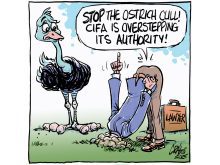Gosselin is the manager for corporate information services at the Canadian Grain Commission.
A recent editorial published in The Western Producer, Farmers foot costs from CGC changes (March 12, 2009), contains a number of inaccuracies that require clarification.
In particular, it confuses a recent Canadian Grain Commission decision to transition away from on-site inspection services on the Prairies with the right of all producers to be paid on the basis of CGC grade and dockage.
Unfortunately, confusion regarding producer rights in this area is not uncommon.
Read Also

Budget seen as fairly solid, but worrying cracks appear
The reaction from the agriculture industry to prime minister Mark Carney’s first budget handed down November 4th has been largely positive.
Since its inception, the CGC has offered an important service for solving disagreements about grade and dockage. This service is referred to as Subject to Inspector’s Grade and Dockage. It is provided under the Canada Grain Act and Regulations. As a cornerstone of producer protection, it continues to be a right and it has not been reduced in any way.
Occasionally, a producer or the person delivering grain for a producer may disagree with the grade and dockage received for a grain delivery at a licensed primary elevator.
When this happens, a producer can ask to have the CGC determine the grade and dockage and make a binding decision. A producer is paid according to this decision.
Subject to Inspector’s Grade and Dockage applies to all 21 grains under the Canada Grain Act.
It covers deliveries to licensed primary elevators only; deliveries to process elevators and grain dealers are not covered.
Here is how the service works. The elevator operator takes a sample from each load of grain delivered.
A representative subsample is taken from the sample. The grain producer or the person delivering the grain and the elevator operator must agree that the subsample is representative.
The subsample is sent to the CGC. When the CGC inspects the subsample, many grading factors are considered, for example, test weight and frost damage.
A CGC inspector examines the portion, determines the grade and dockage and sends the results to each person named in the request.
More information is available on the CGC website, www.grainscanada.gc.ca.
There is also a reinspection process. Any person who has an interest in the grain and who disagrees with the CGC’s decision can, within 15 days of the date on the certificate, ask the chief grain inspector for Canada to re-examine the representative portion. The chief grain inspector’s decision is final and binding.
Rather than diminishing access to this right, the CGC believes that producer access should be increased to cover deliveries to licensed grain dealers or process elevators. The expansion of the Subject to Inspector’s Grade and Dockage is a matter that is currently before Parliament.
The transition away from on-site inspection services at primary elevators on the Prairies is a service to grain companies and is unrelated to the right of producers to be paid on the basis of CGC determined grade and dockage.
In fact, the CGC has never been involved in inspection upon receipt at primary elevators. The CGC has only provided optional on-site inspection for grain shipments leaving primary elevators to a small number of the 300-plus facilities on the Prairies. On-site inspection is not required under the Canada Grain Act and Regulations.
Third-party service providers are available if grain handlers wish to determine a grade before loading railcars for shipment.
Over the years, the question has been asked whether or not the CGC should be in competition with private industry in the provision of optional services. The CGC believes that it should focus its resources on mandated services that are designed to protect farmers and the quality of Canadian grain exports.
This includes on-going delivery of services such as Subject to Inspector’s Grade and Dockage, a service designed to protect producers.
The grain sector, from the farmgate through to end-use customers, continues to evolve. The CGC is committed to growing with the sector to ensure that it continues to protect Canada’s reputation for quality and that farmers receive fair treatment when they deliver their grain.
This growth and evolution requires the CGC to continually evaluate and adapt the services it provides.
The CGC is not reducing services to producers and it is not, nor will not, put Canada’s reputation for quality at risk.














